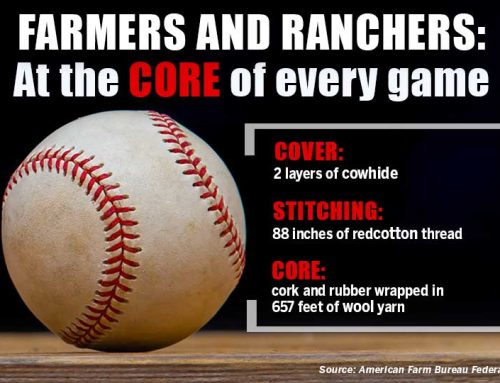by Jennifer Dorsett
Make your list and check it twice. Then, check your budget. It’s a process many of us go through before we head to the grocery store.
Once there, we put our groceries in the basket, check out and probably grumble a bit about the bill.
While we certainly encounter sticker shock occasionally at the grocery store, often we don’t think too much about how the farmer, who grew the food we’re buying, gets paid. Farmers and ranchers, in fact, only get a small portion of our food dollar.
The latest data from the U.S. Department of Agriculture’s (USDA) Economic Research Service shows that, in 2016, about 14 cents of every dollar spent on food goes back to ‘farm share.’ That’s the lowest level recorded since USDA’s Food Dollar series began in 1993.
Farm share means how much of that food dollar goes to farm production and agribusiness costs. Farm production is the farm—where the food is grown. Agribusiness includes farm inputs like seed, fertilizer, machinery and more.
So what ‘farm share’ really means is not all of that 14.8 cents is for the farmer. Instead, seven cents of the 14.8 cents goes directly to all the inputs required to grow a crop or raise livestock.
That means for every U.S. dollar spent on food in 2016, just 7.8 cents of that went back to the farmer or rancher. So, less than 10 percent of what you spend on food goes directly back to the farmer or rancher.
That’s not much when you think about it.
I know food prices are a tough balance. We all want to save money and feed our families nutritious food, but farmers and ranchers have to be profitable in order to continue growing our food and fiber.
Just a little food for thought next time you’re in the grocery store aisle.











Leave A Comment